I reverted my name back to Jonathan Riddell and have now made a new uid for my PGP key, you can get the updated one on keyserver.ubuntu.com or my contact page or my Launchpad page.
Here’s some pics from Akademy
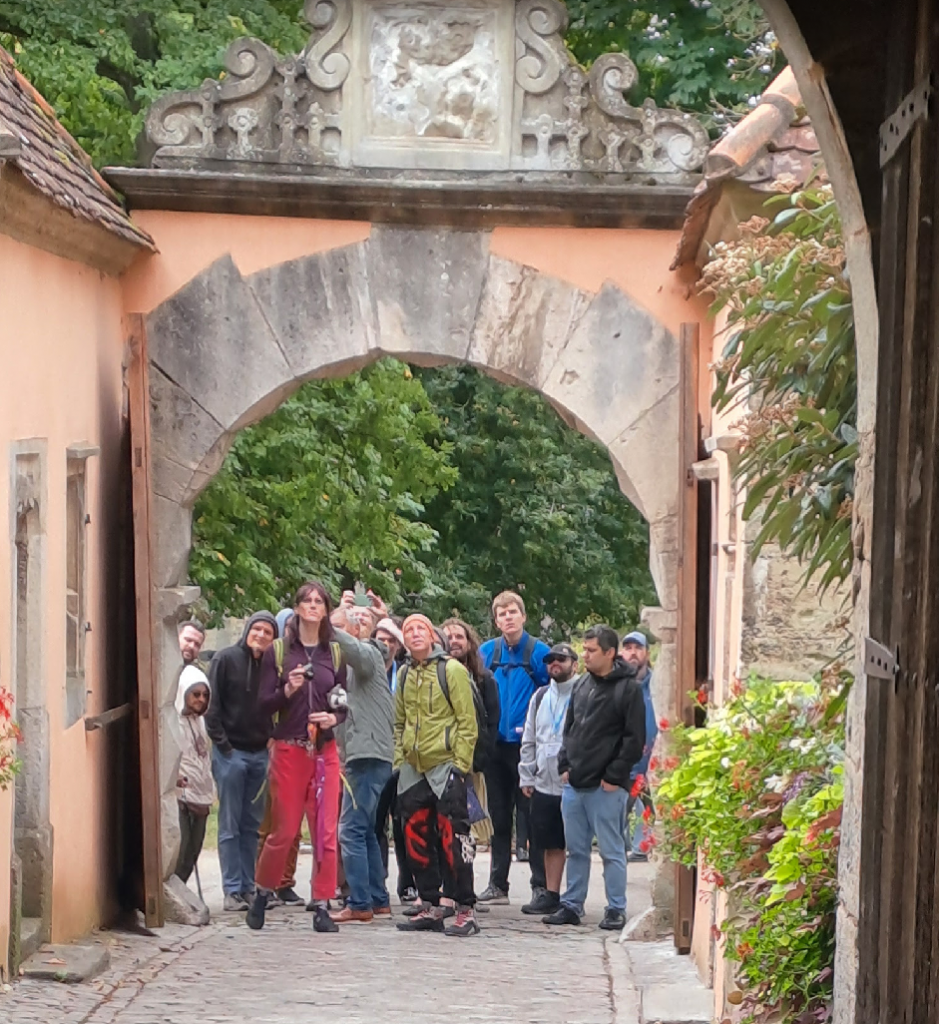
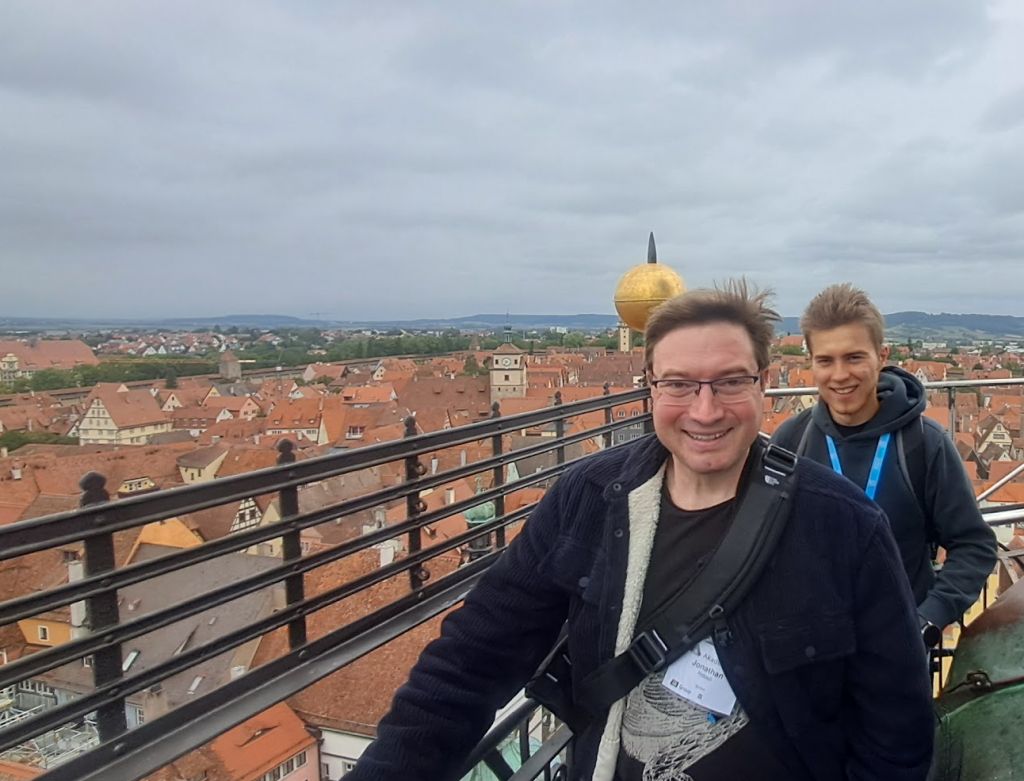
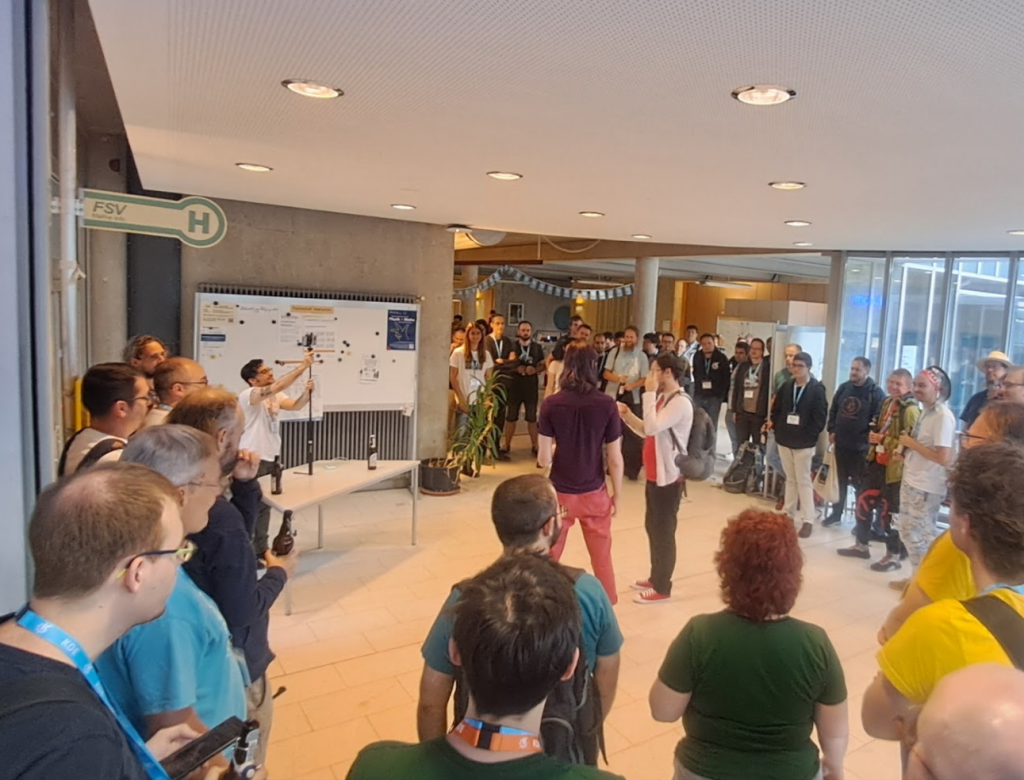
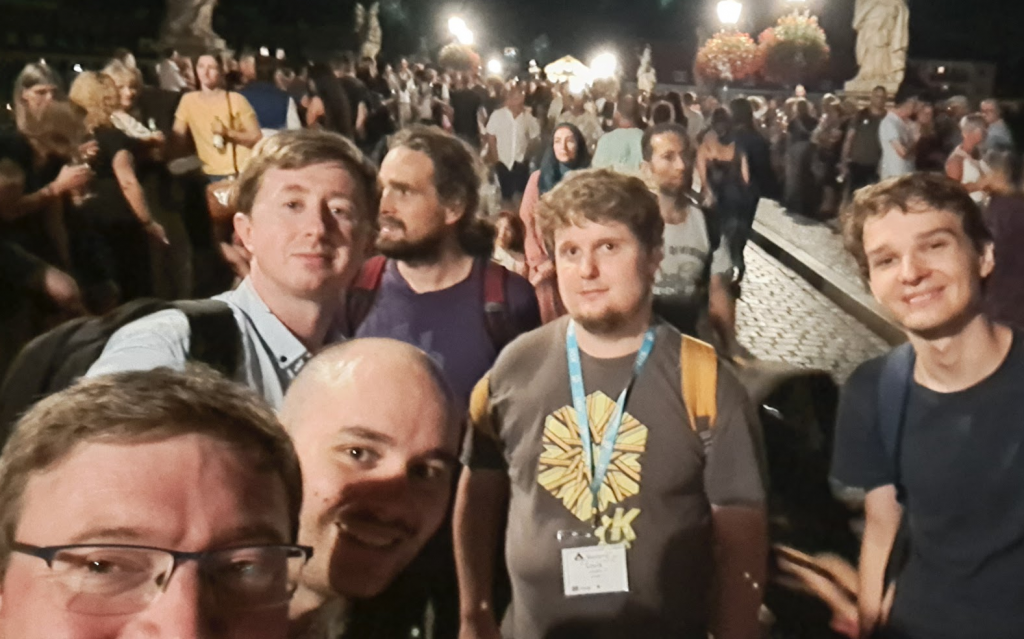
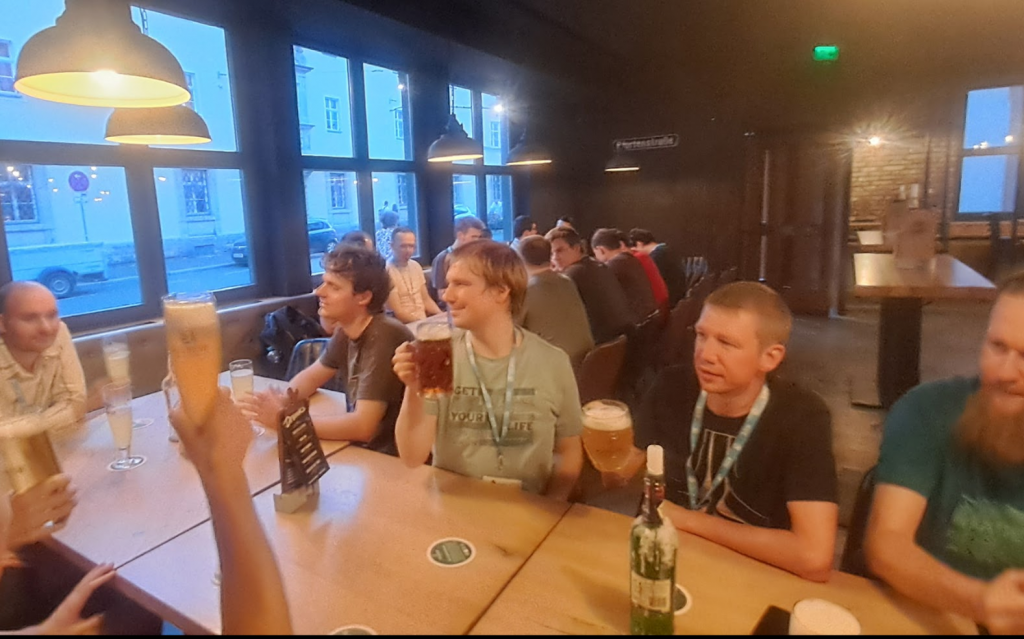
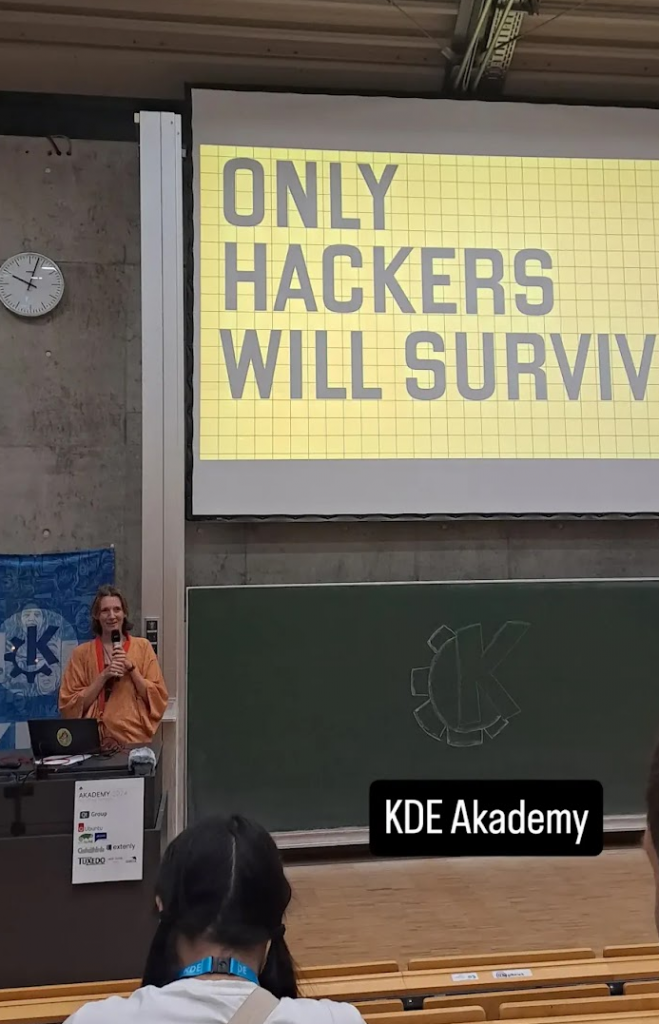

I reverted my name back to Jonathan Riddell and have now made a new uid for my PGP key, you can get the updated one on keyserver.ubuntu.com or my contact page or my Launchpad page.
Here’s some pics from Akademy







https://openuk.uk/openuk-september-2024-newsletter-1/
https://www.linkedin.com/feed/update/urn:li:activity:7238138962253344769/
Our 5th annual Awards are open for nominations and our 2024 judges are waiting for your nominations! Hannah Foxwell, Jonathan Riddell, and Nicole Tandy will be selecting winners for 12 categories. ?
The OpenUK Awards 2024 are open for nominations until Sunday, September 15.. Our 5th Awards again celebrate the UK’s leadership and global collaboration in open technology!
Nominate now! https://openuk.uk/awards/openuk-awards-2024/
Up to 3 shortlisted nominees will be selected in each category by early October and each nominee will be given one place at the Oscars of Open Source, the black tie Awards Ceremony and Gala Dinner for our 5th Awards held at the House of Lords on 28 November, thanks to the sponsorship of Lord Wei.

Plasma Pass is a Plasma applet for the Pass password manager
This release includes build fixes for Plasma 6, due to be released later this week.
URL: https://download.kde.org/stable/plasma-pass/
Sha256: 2a726455084d7806fe78bc8aa6222a44f328b6063479f8b7afc3692e18c397ce
Signed by E0A3EB202F8E57528E13E72FD7574483BB57B18D Jonathan Esk-Riddell <jr@jriddell.org>
https://jriddell.org/esk-riddell.gpg
Oxygen Icons is an icon theme for use with any XDG compliant app and desktop.
It is part of KDE Frameworks 6 but is now released independently to save on resources.
This 6.0.0 release requires to be built with extra-cmake-modules from KF 6 which is not yet released, distros may want to wait until next week before building it.
Distros which ship this version can drop the version released as part of KDE Frameworks 5.
sha256: 28ec182875dcc15d9278f45ced11026aa392476f1f454871b9e2c837008e5774
URL: https://download.kde.org/stable/oxygen-icons/
Signed by E0A3EB202F8E57528E13E72FD7574483BB57B18D Jonathan Esk-Riddell <jr@jriddell.org>
https://jriddell.org/esk-riddell.gpg

This project is creating a WS-Discovery client library based on the KDSoap library.
The name is short for Klarälvdalens Datakonsult AB Simple Object Access Protocol Web Services Addressing Discovery Client.
It is used by the SMB KIO worker from kio-extras.
kio-extras will have two releases as part of KDE’s 6th Megarelease, one for Qt 5 and one for Qt 6. Distros should build and ship both versions of kio-extras but the Qt5 build should use the internal static copy of kdsoap-ws-discovery-client so does not need to be built separately. The Qt 6 build of kio-extras does need this external build of kdsoap-ws-discovery-client. Distros will need an up to date copy of KDSoap library.
There are no changes compared to 0.3.0 but this one is released as stable ahead of KDE Gear 24.02.
SHA 256: 2cd247c013e75f410659bac372aff93d22d71c5a54c059e137b9444af8b3427a
URL: https://download.kde.org/stable/kdsoap-ws-discovery-client/
Signed by E0A3EB202F8E57528E13E72FD7574483BB57B18D Jonathan Esk-Riddell <jr@jriddell.org>
https://jriddell.org/esk-riddell.gpg
Ruqola 2.1.0 is available for packaging.
Ruqola is a chat app for Rocket.chat. This release can build with Qt 5 and Frameworks 5. It can also build with Qt 6 and the soon to be released Frameworks 6.
URL: https://download.kde.org/stable/ruqola/
SHA256: 65295cc39f24f046305bc73df4bcc6e561bd8b8b125537290ce5b5b62488fffd
Signed by E0A3EB202F8E57528E13E72FD7574483BB57B18D Jonathan Esk-Riddell jr@jriddell.org
https://jriddell.org/esk-riddell.gpg
Ruqola 2.1 Beta (2.0.81) is available for packaging and testing.
Ruqola is a chat app for Rocket.chat. This beta release will build with the current release candidate of KDE Frameworks 6 and KTextAddons allowing distros to start to move away from Qt 5.
URL: https://download.kde.org/unstable/ruqola/
SHA256: 2c4135c08acc31f846561b488aa24f1558d7533b502f9ba305be579d43f81b73
Signed by E0A3EB202F8E57528E13E72FD7574483BB57B18D Jonathan Esk-Riddell jr@jriddell.org
https://jriddell.org/esk-riddell.gpg

It’s a pleasure to be on the OpenUK New Year’s Honours list for 2024. There’s some impressive names on there such as Richard Hughes of Packagekit and other projects at Red Hat, Colin Watson who was at Ubuntu with me and I see is now freelance, Mike McQuaid was previously of KDE but is now trying a startup with Mac packager Workbrew for Homebrew.
OpenUK run various activities for open tech in UK countries and KDE currently needs some more helpers for a stall at their State of Open Con in London on Feb 6 and 7 February, if you can help do get in touch.
KDE’s 6th releases will happen next month bringing with it the refresh of code and people that a new major version number can bring, I think KDE’s software in the coming year will continue to impress.
My life fell apart after some family loss last year so I’ve run away to the end of the world at Finesterre in Galicia in Spain for now, let me know if you’re in the area.
KTextAddons is a library with Various text handling addons used by Ruqola and Kontact apps. It can be compiles for both Qt 5 and 6 and distros are advised to compile two builds for each until Ruqola is ported to Qt 6.
URL: https://download.kde.org/stable/ktextaddons/
SHA256: 8a52db8abfa8a9d68d2d291fb0f8be20659fd7899987b4dcafdf2468db0917dc
Changelog
KDiagram 3.0.1 is an update to our charting libraries which fixes a bug in the cmake path configuration. It also updates translations and removes some unused Qt 5 code.
URL: https://download.kde.org/stable/kdiagram/3.0.1/
sha256: 4659b0c2cd9db18143f5abd9c806091c3aab6abc1a956bbf82815ab3d3189c6d
Signed by E0A3EB202F8E57528E13E72FD7574483BB57B18D Jonathan Esk-Riddell jr@jriddell.org
https://jriddell.org/esk-riddell.gpg
An updated stable release of XWayland Video Bridge is out now for packaging.
https://download.kde.org/stable/xwaylandvideobridge/
sha256 ea72ac7b2a67578e9994dcb0619602ead3097a46fb9336661da200e63927ebe6
Signed by E0A3EB202F8E57528E13E72FD7574483BB57B18D Jonathan Esk-Riddell <jr@jriddell.org>
https://jriddell.org/esk-riddell.gpg
Changes
I did my Surf Kayak Leader assessment with Paul Bramble in south west Wales and pleasingly I passed. I booked on not quite knowing what to expect, there wasn’t much pre course information and it was mostly because because the date was convenient. Turns out Wales is beautiful and has great surf beaches, the geography allows for some more access to the Atlantic waves and it feels like there’s more of a community down there than in Scotland where surf can be so sporadic.
I had not done any formal training as none seemed to be available, this discipline is such a niche you just have to take your changes when you get them. But in the past I’ve done uncertified safety days with folks in Scotland as well as SLSGB training and of course whitewater leading is very similar you just have to be aware of the differences.
For revision it’s worth reading the SLSGB Beach Environment Training Aid available online.
I had one other person being assessed and together we reviewed the nearby beaches and picked the best one where the forecast was good, the weather was fine, the tides known, the parking available.
We had three students who were all sea kayakers but had done occasional surf and interested in more which is just the sort of person needed for this. I lead with introductions, experience, abilities, motivation, moving kit around, safety protocols. There’s not much safety protocols available in surf kayaking, generally if there’s a problem then folks need to get into the beach which can be hand signal, waving paddle in the air or single whistle. Otherwise if a paddler thinks they might crash into another person then they should capsize. We checked all boats had buoyancy bags in them and I did a warm up.
Fellow candidate Fran accompanied the students onto the water at first while I watched from the beach. I had suggested staying in the white waves at first but the students didn’t seem to want that and were happy going behind the waves straight away which was fine but I guess clearer discipline there would be better.
I took photos (the most important role) and watched for any swimmers but everyone seemed able to roll fine as needed.
I did run a brief mini-coaching session talking about take off on the waves, it’s supposed to be a lead day without coaching but all days will include some chat about what we’re doing and how to improve.
I did a rescue from the beach of an unconscious paddler from behind the waves which is very hard work. I chose to jump in my kayak for this which is risky as you might not do a smooth launch but I did and it allowed me to bring him back some of the way dragging with my sling and carabiner before I jumped out my boat to drag him back in and up the beach.
I did a deep water rescue of a swimmer, this is very tricky with surf kayaks which tend to be low volume. I managed it with having the swimmer step over my boat into his then two of us hold the front of his boat down to stop water entering his boat from the back.
At one point a confusing scenario happened where a student had a dislocated shoulder and we brought them in, it wasn’t expected and we didn’t manage it very well but it was sprung on us without any warning, although I suppose that’s real life.
I failed to bring my first aid kit or phone onto the beach which was a mistake. I also had lost my watch which was poor leadership although I worked out my camera could tell the time and nobody else seemed to have a watch.
A lovely day’s paddling for sure.


KDiagram is two powerful libraries (KChart, KGantt) for creating business diagrams.
Version 3.0.0 is now available for packaging.
It moves KDiagram to use Qt 6. It is co-installable with previous Qt 5 versions and distros may want to package both alongside each other for app compatibility.
URL: https://download.kde.org/stable/kdiagram/3.0.0/
SHA256: 6d5f53dfdd019018151c0193a01eed36df10111a92c7c06ed7d631535e943c21
Signed by E0A3EB202F8E57528E13E72FD7574483BB57B18D Jonathan Esk-Riddell jr@jriddell.org
https://jriddell.org/esk-riddell.gpg
KWeatherCore is a library to facilitate retrieval of weather information including forecasts and alerts.
0.8.0 is available for packaging now
URL: https://download.kde.org/stable/kweathercore/0.8.0/
SHA256: 9bcac13daf98705e2f0d5b06b21a1a8694962078fce1bf620dbbc364873a0efeS
Signed by E0A3EB202F8E57528E13E72FD7574483BB57B18D Jonathan Esk-Riddell <jr@jriddell.org>
https://jriddell.org/esk-riddell.gpg
This release moves the library to use Qt 6. It is not compatible with older Qt 5 versions of the library so should only be packaged when KWeather is released or in testing archives.
qqc2-breeze5-style is a theme used by Plasma Mobile. This alpha release is a re-bundling of the Plasma/5.27 branch of qqc2-breeze-style. It is for use by distros shipping alpha releases of Plasma 6 so that Qt 5 apps continue to be themed appropriately.
URL: https://download.kde.org/unstable/qqc2-breeze5-style/
SHA256: 813f9da4861567e70d1eccf3a3a092d802ac9475a91070fb47fa
8766f3c1e310
Signed by E0A3EB202F8E57528E13E72FD7574483BB57B18D Jonathan Esk-Riddell <jr@jriddell.org>
https://jriddell.org/esk-riddell.gpg
Oxygen Icons is an icon theme for use with any XDG compliant app and desktop.
It is part of KDE Frameworks 6 but is now released independently to save on resources.
This is the first (and likely only) pre-release, versioned 5.245.0, and it will have a stable release alongside KDE Frameworks 6 in February.
Distros which ship this version can drop the version released as part of KDE Frameworks 5.
sha256: b082a1a9a6d06cdeee2863555951609e95dd499f133035d04719a16f8500497f
URL: https://download.kde.org/unstable/oxygen-icons/
Signed by E0A3EB202F8E57528E13E72FD7574483BB57B18D Jonathan Esk-Riddell <jr@jriddell.org>
https://jriddell.org/esk-riddell.gpg

This project is trying to create a WS-Discovery client library based on the KDSoap
library.
The name is short for Klarälvdalens Datakonsult AB Simple Object Access Protocol Web Services Addressing Discovery Client
It is used by the SMB KIO worker from kio-extras.
kio-extras will have two releases as part of KDE’s 6th Megarelease, one for Qt 5 and one for Qt 6. Distros should build and ship both versions of kio-extras but the Qt5 build should use an internal static copy of kdsoap-ws-discovery-client so does not need to be built separately. The Qt 6 build of kio-extras does need this external build of kdsoap-ws-discovery-client. Distros will need an up to date copy of KDSoap library https://github.com/KDAB/KDSoap/tags.
SHA 256: 5007747f1ce607639bb63244f8894c03a15194c0a891b8d85e10d76dbdf79188
URL: https://download.kde.org/unstable/kdsoap-ws-discovery-client/
Signed by E0A3EB202F8E57528E13E72FD7574483BB57B18D Jonathan Esk-Riddell <jr@jriddell.org>
https://jriddell.org/esk-riddell.gpg
The first stable release of XWayland Video Bridge is out now for packaging.
https://download.kde.org/stable/xwaylandvideobridge/
sha256 f8da6e8fe0ec3bd5ea797af8aad8fe1daab36fc3c77e2d36bb7443832cdfcffa
Signed by E0A3EB202F8E57528E13E72FD7574483BB57B18D Jonathan Esk-Riddell <jr@jriddell.org>
https://jriddell.org/esk-riddell.gpg
# About
By design, X11 applications can’t access window or screen contents for wayland clients. This is fine in principle, but it breaks screen sharing in tools like Discord, MS Teams, Skype, etc and more.
This tool allows us to share specific windows to X11 clients, but within the control of the user at all times.
# How to use
xwaylandvideobridge should autostart on login. It will run in the background. Next time you try to share a window a prompt will appear.
The previously selected window should now be available for sharing. The title will always be “Wayland to X11 bridge” no matter what window is selected.
The system tray icon provides finer control.
# Use outside Plasma
This should work on any desktop that supports the Xdg desktop portals and Pipewire streaming and have a working system tray.
# Future
Ideally this should be more automatic, but this tool aims purely to serve as a stop-gap whilst we wait for these clients to get native wayland support and for the surrounding wayland protocols to be better. How much more it gets developed depends on feedback and how the surrounding ecosystem evolves.
KUserFeedback is a library for collecting user feedback for apps via telemetry and surveys.
Version 1.3.0 is now available for packaging.
This version adds the option to build it for Qt 6. It can also be built for Qt 5 and distros may want to package it twice, however this will mean handling some overlapping files and most apps which use it will be ported to Qt 6 as part of the KDE 6 MegaReleases in February so distros may prefer to drop Qt 5 builds then.
sha256 252308b822dd4690ea85ab1688c9b0da5512978ac6b435f77a5979fc1d2ffd13
URL https://download.kde.org/stable/kuserfeedback/
Signed by E0A3EB202F8E57528E13E72FD7574483BB57B18D Jonathan Esk-Riddell <jr@jriddell.org>
https://jriddell.org/esk-riddell.gpg
* new release 1.3
* Add CC0-1.0 license
* Do not look for QtHelp if docs are disabled
* Remove unneeded setting of CMake policies, implied by requiring 3.16
* Add flatpak CI
* Bump minimum cmake version to 3.16
* Add explicit moc includes to sources for moc-covered headers
* Remove Designer's "." normaloff file data from icon properties in .ui files
* Use latest-kf6 branch for Qt6
* In qt6 plugin name is KUserFeedbackQmlQt6
* PHP 8 compatibility
* Fix Qt 6 build of PHP-dependent unit tests
* categoryaggregationmodel
* Fix include form (use "" instead of <>) for provider.h
* Remove forward declaration as include is already defined
* Fix debug message
* Autogenerate debug categories
* Create logging_p.cpp directly
* Fix show headers in qtc6
* Compatibility is not necessary now
* kuserfeedback_version.h was not installed
* Fix compatibility (install temporary include in KUserFeedBack too)
* Add warning about removing compatibility
* Show all headers in includes
* KUserFeedbackConsole is an internal static lib too
* Not necessary here as it's an internal static lib
* Fix install target file
* Allow to co-install
* Port to new syntax
* Add Qt 6 Android CI
* typos–
* Add Qt6 windows CI support
* Hide finding docs dependencies behind ENABLE_DOCS
* Install translations
* qtversionsource: fix Qt 6.5 build
* avoid invalid lastX times
* .gitlab-ci.yml: enable static builds
* add it to CI qt6 bsd
* Fix cmakename in metainfo.yaml
* Tell no data has been sent if no data has been sent
* Give the dialog an actual title
* Remove duplicate header between cpp/h files
* Add windows CI
libqaccessibilityclient 0.5.0 is out now. The release adds Qt 6 support. libqaccessibilityclient is used by KMag and KWin both of which have forthcoming releases that are ported to Qt 6 so there should be no need for distros to build two versions.
https://download.kde.org/stable/libqaccessibilityclient/libqaccessibilityclient-0.5.0.tar.xz
Signed by E0A3EB202F8E57528E13E72FD7574483BB57B18D Jonathan Esk-Riddell <jr@jriddell.org>
https://jriddell.org/esk-riddell.gpg
* new release: new version and new ECM URL
* Bump min required Qt6 to 6.5
* Port away from deprecated operator+(Qt::Modifier modifier, Qt::Key key
* Port away from deprecated QVariant::Type
* Add explicit moc includes to sources for moc-covered headers
* Use ECMDeprecationSettings
* Have export macros header include version header (Qt6-only)
* Use QAccessibilityClient6 as package name for Qt6 version
* Use variable to hold CMake config name, also targets file name
* Install headers into QAccessibilityClient/ visibility layer
* Move version setup into src/ subdir
* Use generic target name for generated library
* Move library target property setting next to declaration
* Move CMake config template file into src/ subdir
* Remove unimplemented methods
* Use ECM master when building for Qt6
* Use CamelCase includes
* Fix finding the unit test helper executable
* Add FreeBSD Qt6 CI support
* Add Gitlab CI
* Remove duplicate header between cpp/h files
* We depend against qt5.15
* Use -qt6 when we build against qt6
* Fix find_package
* Fix signals
* Adapt build system for building against qt6
* It's already define in ecm
* Make compile with strict compile flags
* Make building without deprecated methods
* Fix some compile error
* Add CI definitions information for seed job
* Use more target-centric cmake code
* Use GenerateExportHeader
* Remove module prefixe from Qt includes
* Do not use deprecate QFlatgs(nullptr) constructor
* Fix member init order to match definition order
* Clean up include dirs
* Convert license statements to SPDX expressions
* Add support for AccessibleId property
* Update README.md a bit
* Support API documentation generation with kapidox
* Remove the references to projects.kde.org
* Fix qstring minor optimization
* Port setMargins
* Use only undeprecated KDEInstallDirs variables
* KDECMakeSettings already cares for CMAKE_AUTOMOC and BUILD_TESTING
* Fix use in cross compilation
* Q_ENUMS -> Q_ENUM
* more complete release instructions